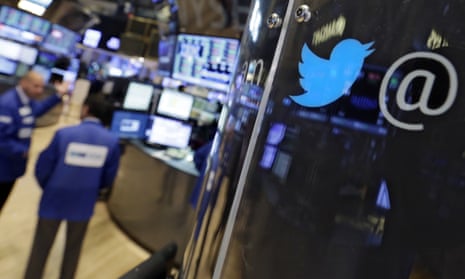Twitter is in trouble. With user growth stalled, staff fleeing the company by the hundreds, and the company’s stock still at the bottom of the cliff it fell from in April, sources say the company’s futile obsession with matching its biggest competitor for scale is costing it dearly. And it still doesn’t have a permanent CEO.
“Honestly, I think part of the fundamental issue is their relentless fixation on how they compare to Facebook, and I think that’s in some ways a fatal posture,” one former Twitter executive told the Guardian. “I mean, no one will say on the record ‘We compare ourselves relentlessly to Facebook,’ because that’s a losing position, but of course they do.”
Indeed, Twitter leadership told investors on Tuesday they were considering revamping the entire look of the service to more closely mirror its “While You Were Away” mobile feature – as Facebook-like as Twitter gets – in an effort to increase general interest in the product.
A base of Facebook’s size – about 1.4 billion users against Twitter’s 300 million – isn’t a realistic goal, said Brian Wieser of Pivotal Research Group, who still has the stock listed as a “buy”.
‘They shot for the stars and they only got to the moon, and we’re disappointed’
“The management team has focused so much on the aspiration of being ubiquitous, which I always thought was a mistake,” he said, adding that no matter how undramatic his own expectations, “investors have whipsawed back and forth and center” and kept the share price in flux.
“They shot for the stars and they only got to the moon, and we’re disappointed,” he said. “The product as it stands isn’t for everybody. Not everybody wants to use Twitter. Not everyone consumes news. The gap is between what management has set for itself and what’s realistic.”
That doesn’t seem to matter to Twitter. Jack Dorsey, co-founder and interim CEO, said Twitter needed to be “the most powerful microphone in the world” on the company earnings call on Tuesday evening. Stock fell yet further after the report, off by 12.4% shortly after Wednesday’s open.
The company’s recent attempts to increase its user base and keep them from abandoning their accounts at the current rate have failed, Dorsey admitted, but “this is unacceptable”, he told investors, “and we’re not happy about it”. The company does not seem interested in exploring the possibility that it has found all the users it was going to find.
Still, there is at least the admission that Twitter is not going to find more users immediately. “We do not expect to see sustained, meaningful growth in MAUs until we start to reach the mass market,” CFO Anthony Noto said on the same call. “We believe that will take a considerable period of time.”
When, last quarter, Twitter lowered its projections for user growth in 2015, shares of the social media company cratered despite 71% year-over-year ad revenue growth (which is also slowing – the previous quarter, it was up 97%, the quarter before, 109%). Instagram is projected by eMarketer to leave it in the dust by 2017. The photo-sharing service has already passed Twitter in terms of active monthly users.
‘It’s just not a very happy place to work’
The growth problem is less the ability of the business to generate cash than the need of Wall Street to see all numbers, especially rates of growth in every category, increase on every earnings call. The ex-exec said that Twitter had run off talent “in an effort to chase those massive numbers”.
“I know they’re getting a lot of pressure from the street,” the executive said. “But there have been so many fits and starts and changes in direction that current people in positions of leadership can’t do their jobs. And so they bring in a new group.”
That volatility plays out in day-to-day life at the company, as well: high-profile staffers have left the company, from COO Ali Roghani and CFO Mike Gupta to Twitter’s head of communications, Gabriel Stricker, whose departure was announced with a passive aggressive note suggesting he had been fired.
Four-hundred and fifty staffers, in fact, have departed in the last year, according to an analysis of LinkedIn profiles by the Financial Times. Two more left on Tuesday just as earnings were announced: a product director named Todd Jackson, and Christian Oestlien, Twitter’s head of growth.
As the executive put it: “It’s just not a very happy place to work.”
Meanwhile, Twitter’s corporate culture hasn’t gotten any less cluttered with newcomers – many of them purchased, rather than hired. Among the other companies it’s acquired (and had to incorporate) in the last 12 months: CardSpring, Madbits, Mitro, Twitpic, Zipdial, Nich, Periscope, TenXer, Tellapart and Whetlab. Tellapart alone cost about $533m.
So what’s next for the company? No one knows. “The only answer, which I don’t think is feasible, is to say, ‘You know what, we’re going to be the best damn 300 million monthly active user we think we can be,’ and not aim for Facebook-like scale,” said the executive. “But this is the reality, and I feel for them. It’s the reality of being a publicly traded company.”

Comments (…)
Sign in or create your Guardian account to join the discussion